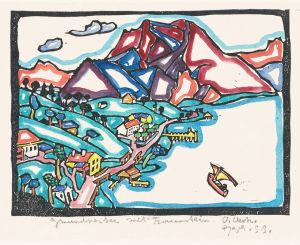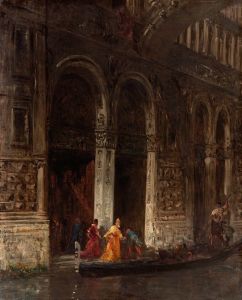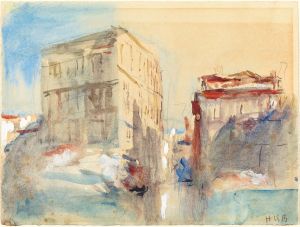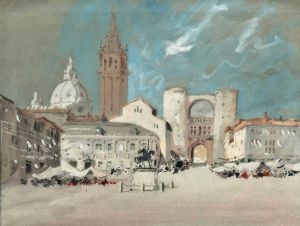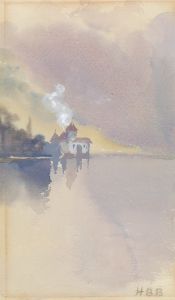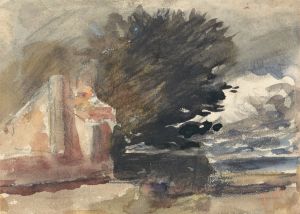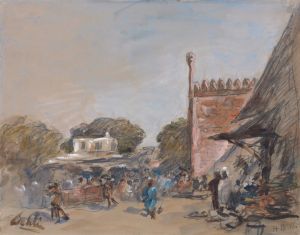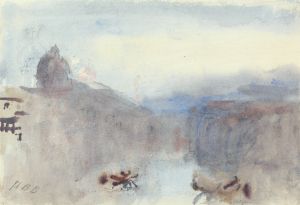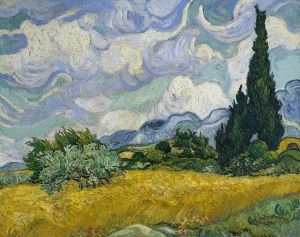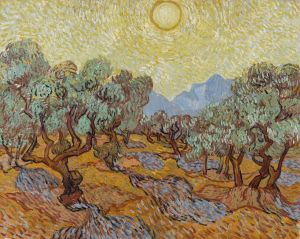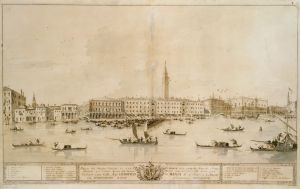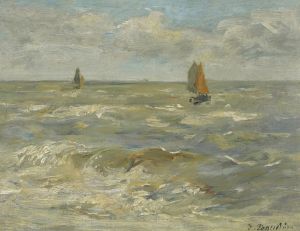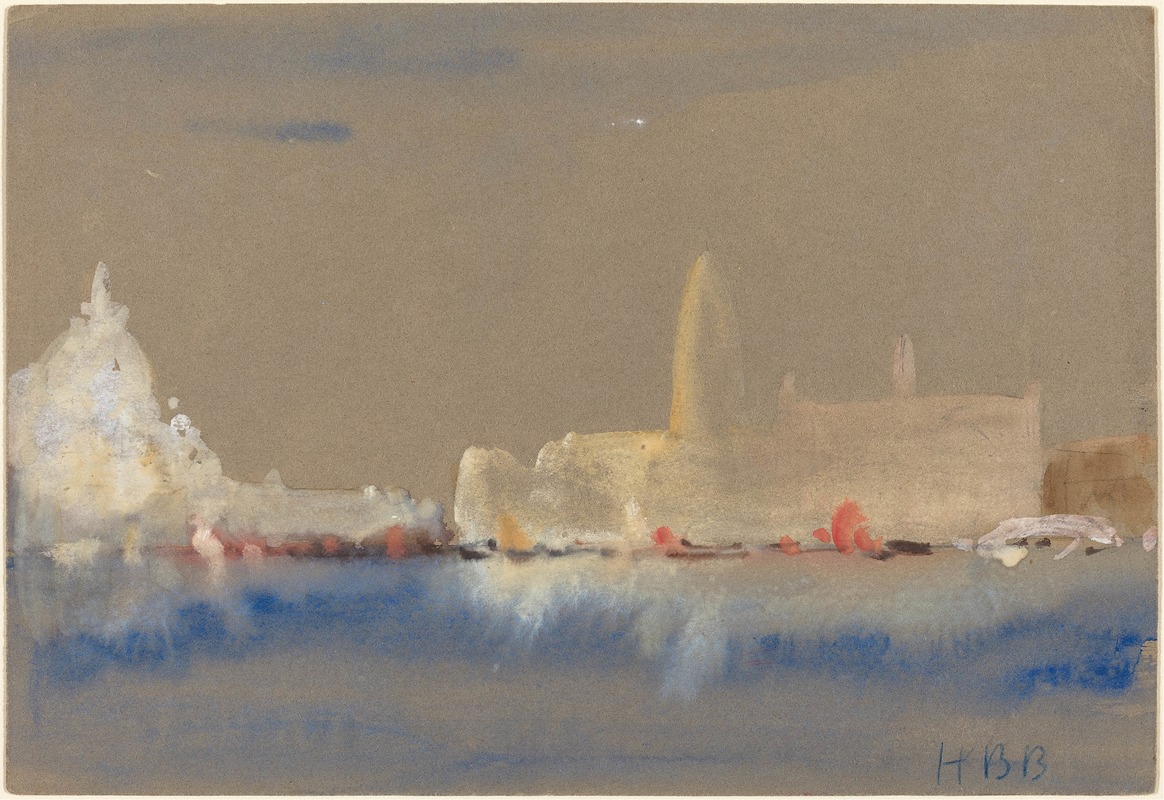
The Salute and the Palazzo Ducale from the Bacino di San Marco
A hand-painted replica of Hercules Brabazon Brabazon’s masterpiece The Salute and the Palazzo Ducale from the Bacino di San Marco, meticulously crafted by professional artists to capture the true essence of the original. Each piece is created with museum-quality canvas and rare mineral pigments, carefully painted by experienced artists with delicate brushstrokes and rich, layered colors to perfectly recreate the texture of the original artwork. Unlike machine-printed reproductions, this hand-painted version brings the painting to life, infused with the artist’s emotions and skill in every stroke. Whether for personal collection or home decoration, it instantly elevates the artistic atmosphere of any space.
Hercules Brabazon Brabazon was a British artist known for his watercolors and his unique approach to capturing landscapes and architectural scenes. One of his notable works is "The Salute and the Palazzo Ducale from the Bacino di San Marco," which depicts a view of Venice, a city that has inspired countless artists over the centuries.
Brabazon was born in 1821 in Paris but spent much of his life in England. He was educated at Harrow School and Trinity College, Cambridge. Although he initially pursued a career in law, he eventually devoted himself entirely to art. Brabazon traveled extensively throughout Europe and North Africa, drawing inspiration from the diverse landscapes and cityscapes he encountered. His work is characterized by a loose, impressionistic style that captures the essence of a scene rather than its precise details.
"The Salute and the Palazzo Ducale from the Bacino di San Marco" is a watercolor painting that exemplifies Brabazon's style. The painting features a view of the Basilica di Santa Maria della Salute and the Doge's Palace (Palazzo Ducale) as seen from the Bacino di San Marco, the main waterway in Venice. This vantage point offers a sweeping view of some of the city's most iconic architectural landmarks.
The Basilica di Santa Maria della Salute, commonly known as the Salute, is a Roman Catholic church and minor basilica located at the junction of the Grand Canal and the Bacino di San Marco. It was built in the 17th century as a votive offering for the city's deliverance from the plague. The church is renowned for its distinctive Baroque architecture, featuring a large dome and ornate façade.
The Palazzo Ducale, or Doge's Palace, is another significant landmark in Venice. It served as the residence of the Doge of Venice, the supreme authority of the former Venetian Republic. The palace is an example of Venetian Gothic architecture and is known for its elaborate design and historical significance.
Brabazon's painting captures the interplay of light and water that is characteristic of Venice. His use of watercolor allows for a fluid and dynamic representation of the scene, with soft washes of color that convey the atmosphere and mood of the city. The painting reflects Brabazon's ability to distill the essence of a location into a harmonious composition.
Brabazon's work was well-received during his lifetime, and he exhibited at the Royal Academy and other prestigious venues. Despite his success, he remained somewhat of an independent figure in the art world, preferring to follow his own artistic instincts rather than adhere to the prevailing trends of the time.
Today, Brabazon's paintings are appreciated for their spontaneity and charm. "The Salute and the Palazzo Ducale from the Bacino di San Marco" is a testament to his skill in capturing the spirit of a place, and it continues to be admired by art enthusiasts and historians alike.





